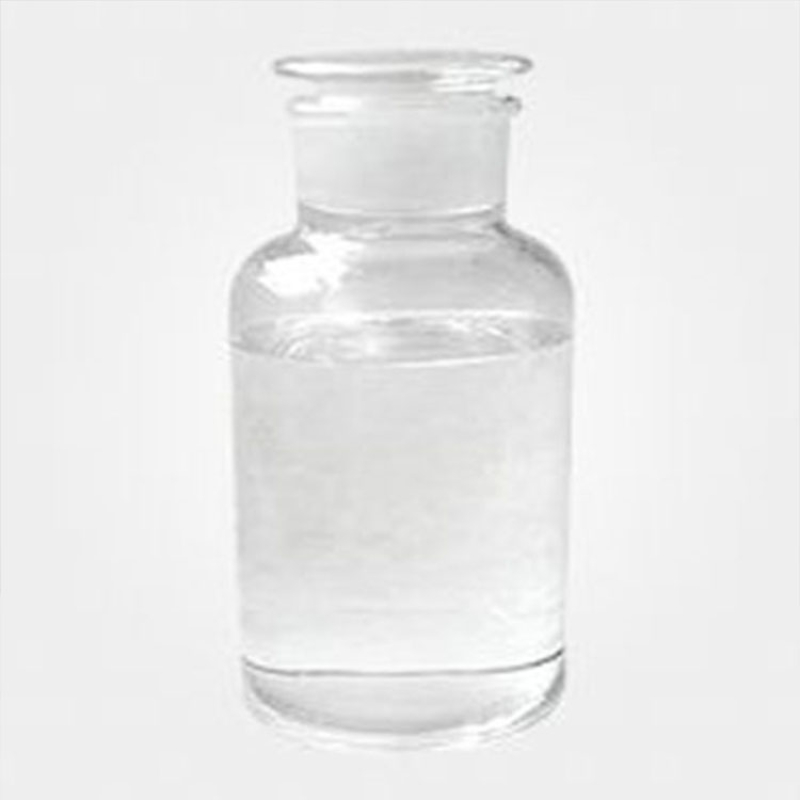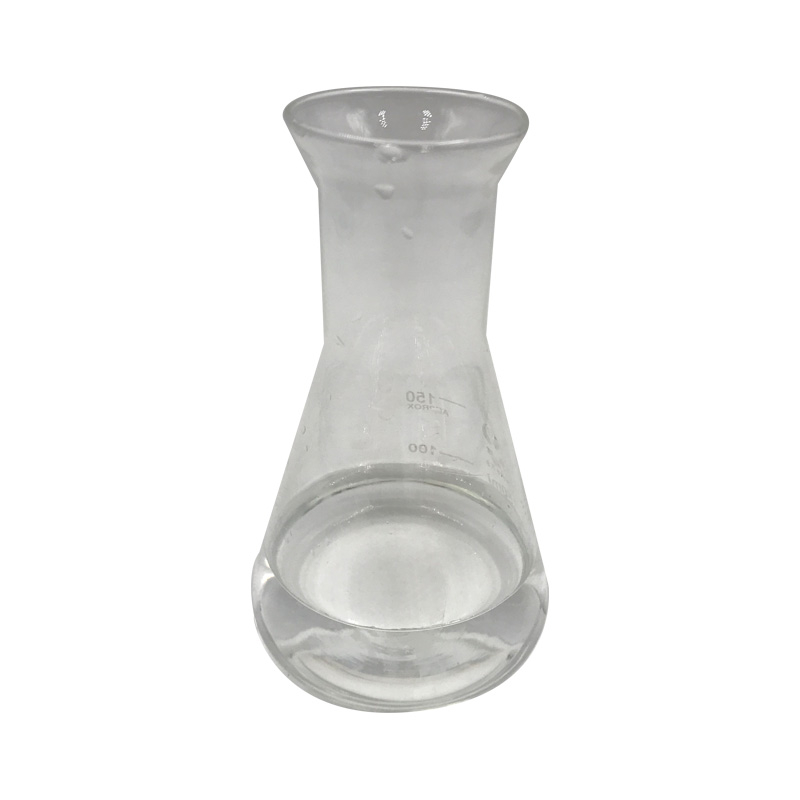Products Description of Benzylamine CAS#100-46-9Benzylamine, also known as benzylamine, is an organic compound with the chemical formula C7H9N.
Contact Now
Products Description of Thiabendazole CAS#148-79-8Thiabendazole is commonly known as Tekodo, Tibilin, Thiobendazole, Thiabendazole, and Thiabendazole. It has the ability to conduct systemically to the top, but not to the base. It has a long lasting effect and has cross-resistance with benzimidazole fungicides. It has inhibitory activity against ascomycetes, basidiomycetes, and deuteromycetes, and is used to prevent and control fungal diseases of various crops and preserve fruits and vegetables.
Contact Now
Products Description of 2,2-Dimethyl-1,3-dioxolane-4-methanol CAS#100-79-8(+,-)-2,2-Dimethyl-4-hydroxy-1,3-dioxane is a chemical.2,2-Dimethyl-1,3-dioxolane-4-methanol Chemical PropertiesMelting point -27℃Boiling point 189-191 °Cdensity 1.066 g/mL at 20 °C(lit.)vapor pressure 34Pa at 20℃refractive index n20/D 1.434Fp 176 °Fstorage temp. Sealed in dry,2-8°Csolubility 172g/l solubleform Liquidpka14.20±0.10(Predicted)color Clear colorlessPH4.0-7.5 (H2O)Water Solubility miscibleMerck 14,5213Safety Informa
Contact Now
Products Description of Thiabendazole CAS#148-79-8Thiabendazole is commonly known as Teketol, Thiabendazole, Thiabendazole, Thiabendazole, and Thiabendazole. It has systemic apical conductivity, but cannot conduct to the base. It has a long lasting effect and has cross-resistance with benzimidazole fungicides. It has inhibitory activity against ascomycetes, basidiomycetes and deuteromycetes and is used to prevent and treat various crop fungal diseases and preserve fruits and vegetables.
Contact Now
Products Description of Benzyl alcohol CAS#100-51-6Benzyl alcohol, also known as benzyl alcohol, has a molecular formula of C6H5CH2OH and a density of 1.045 g/mL at 25°C (lit.). It is the simplest fatty alcohol containing phenyl groups and can be regarded as hydroxymethyl-substituted benzene or phenyl-substituted methanol. It is a colorless, transparent, viscous liquid with a faint aromatic odor. Sometimes, after being left for a long time, benzyl alcohol will have a slight smell of bitter almonds due to oxidation.
Contact Now
Products Description of Monomethylaniline CAS#100-61-8N-methylaniline is the main product in the N-alkyl aromatic amine series and an important intermediate in fine chemicals. Very versatile. my country's first set of production equipment was built with the aid of the former Soviet Union in the 1950s. The products are mainly used to make explosive centralizers and are often used to blend straight-run Chemicalbook gasoline.
Contact Now
Products Description of TrichloroethyleneCAS#79-01-6Trichloroethylene (TCE), also known as acetylated trichloroethylene, is a colorless, slightly sweet volatile liquid and a highly soluble solvent. It is insoluble in water but soluble in organic solvents such as ethanol and ether. It is non-flammable under normal conditions.
Contact Now
Products Description of Ademetionine 1,4-butanedisulfonate CAS#101020-79-5S-Adenosylmethionine 1,4-butanedisulfonate is used to synthesize sulfo-adenosyl-L-methionine (SAMe) salt.Ademetionine 1,4-butanedisulfonate Chemical PropertiesMelting point >48oC (dec.)storage temp. under inert gas (nitrogen or Argon) at 2-8°Csolubility DMSO (Slightly, Heated), Methanol (Slightly), Water (Slightly)form Solidcolor Off-WhiteStability:HygroscopicInChIKeyPVCDYZJGZPCASW-FGEWMKOMNA-MSMILESC(CCCS(O)(=O)=O)S(O)(=O)=O.O[C@@H]1[C@@H]([C@@H](C[S+](C)CC[C@H](N)C(=O)O)O[C@H]1N1C=NC2C(
Contact Now
Products Description of DDAO CAS#2605-79-0N,N-Dimethyldecyl-N-amine oxide is an organic compound with a chemical formula of C12H27NO and a molecular weight of 201.35.DDAO Chemical PropertiesMelting point 70 - 73°Cdensity 0.996 g/mL at 20 °Cvapor pressure 0Pa at 25℃refractive index n20/D 1.337storage temp. 2-8°Csolubility Chloroform (Slightly), Methanol (Slightly)form Solidpka4.79±0.40(Predicted)color White to Off-WhiteWater Solubility 409.5g/L at 30℃BRN 2352550InChIKeyZRKZFNZPJKEWPC-UHFFFAOYSA-NLogP0.95 at 20℃CAS DataBa
Contact Now
Products Description of Maltose CAS#69-79-4Maltose is the abbreviation of maltobiose, also known as D-maltose and maltose. A disaccharide formed by connecting, condensing, and dehydrating two molecules of α-D-glucose through α-1,4 glycosidic bonds. There is also a free hemiacetal hydroxyl group in the molecule, which is a reducing sugar. Like glucose, it can make Doron's reagent and Fehling's reagent react positively.
Contact Now
Products Description of 3,5-Dimethylacetophenone CAS#5379-16-83,5-Dimethylacetophenone is a chemical substance with the chemical formula C10H12O and a molecular weight of 148.21.3,5-DIMETHYLACETOPHENONE Chemical PropertiesMelting point 20°CBoiling point 98-100°C 8mmdensity 0,988 g/cm3refractive index 1.5290Fp 98-100°C/8mmstorage temp. Sealed in dry,Room Temperatureform powder to lump to clear liquidcolor White or Colorless to Almost white or Almost colorlessλmax251nm(MeOH)(lit.)BRN 2240987Safety InformationSafety Statements 24/25HS Code&nb
Contact Now
Products Description of Cobalt carbonate CAS#513-79-1Red monoclinic crystals or powder. Almost insoluble in water, alcohol, methyl acetate and ammonia.
Contact Now
Products Description of HYDROXYLAMINE CAS#7803-49-8Hydroxylamine is also called "hydroxylamine". Chemical formula NH2OH. Molecular weight 33.03. Unstable white large flake or needle-shaped crystals. Very easy to absorb moisture, volatile, very soluble in water. Deliquesce in the air. Odorless, corrosive to the skin. When the concentration is 100%, 10%, 20%, 30%, 40%, 50%, the relative density of the aqueous solution is: 1.2040, 1.0192, 1.0410, 1.0637, 1.0875, 1.1122. The product decomposes in hot water and is slightly soluble in ether, benzene, carbon disulfide, and chloroform.
Contact Now
Products Description of MAA CAS#79-41-4Methacrylic acid is an important chemical raw material. It has two functional groups, carbon-carbon double bonds and carboxylic acid groups, so it can undergo reactions such as polymerization and esterification.
Contact Now
Products Description of Benzyltributylammonium chloride CAS#23616-79-7Benzyltri-n-butylammonium chloride CAS number: 23616-79-7. Molecular weight: 311.93. LogP: 2.40770. Appearance and properties: white to light yellow crystals.
Contact Now
Styrene CAS#100-42-5 Styrene is a positive natural chemical compound having the chemical components C8H8 and structural system CH2=CHC6H5, additionally recognized as styrol, vinylbenzene, phenylethene,phenylethylene,styrene,styreen and so on. Its chemical shape is made up of a benzene ring bonded onto a vinyl team . At room temperature and pressure, styrene is a clear, colorless liquid.
Contact Now
Products Description of Dimethyl thio-toluene diamine CAS#106264-79-3DMTDA is a new type of polyurethane elastomer curing crosslinking agent, which mainly contains two isomers, namely a mixture of 2,4- and 2,6-dimethylthiotoluenediamine (the ratio is about 77~80/17~20).
Contact Now
Products Description of Chloroacetyl Chloride CAS#79-04-9Colorless or slightly yellow liquid with strong irritation. Soluble in benzene, carbon tetrachloride, ether and chloroform. Toxic! Irritating to eyes and mucous membranes.Chloroacetyl chloride has active chemical properties and decomposes when exposed to water and alcohol. It can be used as an acylation reagent. For example, it can react with naphthalene, cyclopropane, ethylene and other reagents.
Contact Now
Products Description of Methyl Tributyl Ammonium Chloride CAS#56375-79-2Methyltributylammonium chloride, also known as tributylmethylammonium chloride, has a molecular formula of C13H30ClN, a molecular weight of 235.84, and a CAS registration number of 56375-79-2.
Contact Now
Products Description of Benzyltributylammonium chloride CAS#23616-79-7Benzyltributylammonium chloride is a chemical substance with the molecular formula C19H34ClNBenzyltributylammonium chloride Chemical PropertiesMelting point 155-163 °C (lit.)Boiling point 466.93°C (rough estimate)density 0.9523 (rough estimate)refractive index 1.6000 (estimate)storage temp. Sealed in dry,Room Temperatureform Crystalline Powdercolor White to ivoryWater Solubility solubleSensitive HygroscopicBRN 3776210Stability:Stable. Combustible.
Contact Now
Products Description of Phenylhydrazine CAS#100-63-0 Phenylhydrazine, also known as hydrazine, was first synthesized by German organic chemist Hermann Emil Fischer in 1875 and is the first synthesized hydrazine derivative. It is a light yellow crystal or oily liquid at room temperature and a monoclinic prism crystal at low temperature. It is easily oxidized in the air and becomes dark brown or dark red. It is one of the derivatives of hydrazine, often abbreviated as PhNHNH2. It is slightly soluble in water and alkaline solution, and soluble in dilute acid.
Contact Now
Products Description of POLYCARBOMETHYLSILANE CAS#62306-27-8Transparent oily liquidPOLYCARBOMETHYLSILANE Chemical PropertiesMelting point 79-84 °Cdensity 1.1 g/mL at 25 °C(lit.)Product Application of POLYCARBOMETHYLSILANE CAS#62306-27-8Silicon carbide ceramic polymer precursors. Ceramic coatings from polymer melts or solutions.Factory and Equipment ShowFast delivery timeInventory 2-3 working days New production 7-10 working days
Contact Now
Products Description of 5-Methyl-2-Thiophenecarboxylic Acid CAS#1918-79-25-Methyl-2-Thiophenecarboxylic Acid is a colorless, transparent liquid with a melting point of 136-138°C.5-Methyl-2-Thiophenecarboxylic Acid Chemical PropertiesMelting point 135-138 °C(lit.)Boiling point 229.75°C (rough estimate)density 1.365 (estimate)refractive index 1.5300 (estimate)storage temp. 2-8°C(protect from light)pka3.71±0.10(Predicted)form Liquidcolor ClearBRN 113857CAS DataBase Reference1918-79-2(CAS DataBase Reference)NIST Chemistry Reference5-Methyl-2-thioph
Contact Now
Products Description of Glycolic acid CAS#79-14-1Glycolic acid, also known as glycolic acid and glycolic acid, is also an important organic synthesis intermediate and chemical product. It is widely used in organic synthesis, cleaning, electroplating, textile, leather, sterilization and other industries.
Contact Now



































